Search Results
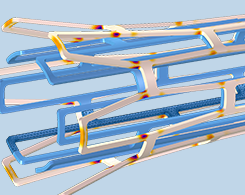
Finding an Accurate Model to Study Blood Flow Around a Stent
Biomedical example involving CFD simulation: In order to analyze the blood flow around an arterial stent, you need a fluid model that can describe blood’s non-Newtonian behavior.

Exploring the Effect of Greenery on Urban Air Pollution via Simulation
Can planting greenery in cities actually reduce air pollution? Researchers used CFD simulation to investigate how greenery affected the air quality of urban environments.

Happy Birthday, Wilhelm Röntgen
Wilhelm Röntgen, a German physicist, is best known for discovering X-rays. Fun fact: The first X-ray ever taken is of the hand of his wife, Anna Bertha.
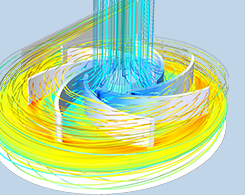
Predict the Performance of Rotating Cone Micropumps with Simulation
Researchers from Texas A&M University used multiphysics simulation to evaluate the fluid dynamics and performance of a rotating cone micropump, a key component in many types of process equipment.

Analyzing Novel Roof Tile Designs with Multiphysics Simulation
To investigate a novel design for roof tiles that can keep buildings cool in hot climates, called Life HEROTILE Project, a research group from Italy turned to multiphysics simulation.
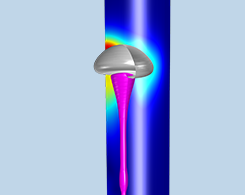
Preventing Bubble Entrapment in Microfluidic Devices Using Simulation
Microfluidic devices are no match for bubbles. In fact, if bubbles become trapped in a microfluidic device, it could malfunction. Veryst Engineering created a CFD model to study this process.
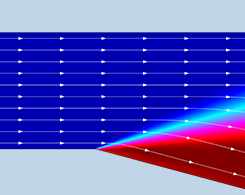
Ensure Accurate Expansion Fan Results with a Benchmark Model
When a supersonic flow turns around a convex corner, it causes an expansion fan. You can analyze this phenomenon in COMSOL Multiphysics® with a validated benchmark.
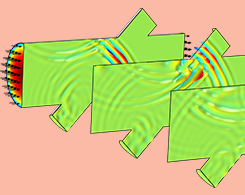
Using the Discontinuous Galerkin Method to Model Linear Ultrasound
You can easily model acoustically large problems, like linear ultrasound, with a predefined physics interface that uses a memory-efficient approach called the discontinuous Galerkin method.
